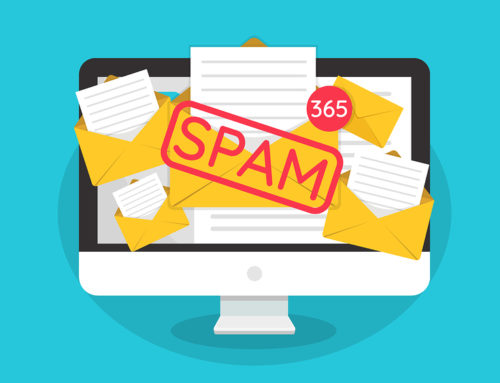 Yesterday in “10 Donations. 3 Thank-Yous. 7 Failures to Communicate,” I shared the results of my recent giving experiment, where only 3 out of 10 national nonprofits acknowledged my gift with a thank-you.
Yesterday in “10 Donations. 3 Thank-Yous. 7 Failures to Communicate,” I shared the results of my recent giving experiment, where only 3 out of 10 national nonprofits acknowledged my gift with a thank-you.
These results mimic last year’s, and in the comments on last year’s post, a few people suggested that the fact that the donations were processed by Network for Good may have been part of the problem, because Network for Good may not be the nonprofit’s preferred way to process online donations or because the Network for Good system is too cumbersome for some nonprofits.
I don’t know if the same issue will come up when discussing this year’s experiment, but I do know this: Whether you prefer to work with Network for Good for your online payment processing or not is a moot point. Whether you’ve even heard of Network for Good or not is moot.
Full disclosure: I like Network for Good. I recommend their free and their paid services and they provide an incredible amount of top-notch communications and fundraising training to nonprofits for free. Katya Andresen, their chief operating officer, and I are friends. She wrote the foreword to my upcoming book. We sometimes do business together. She’s an awesome blogger.
But even if none of this were true, I would give you the exact same advice, because you as a nonprofit manager don’t get to make all the decisions about how people donate online to your cause.
You can certainly guide them down your preferred path, which may be a “Donate” button on your website connected to some other processing system. But if a donor wants to support your cause through Facebook Causes, Guidestar, CharityNavigator, Change.org, Capital One’s Giving Site (which I used for my experiment), or through Network for Good itself, then Network for Good is processing that donation for your donor and for you.
Some of you are wondering who and what the heck this Network for Good is. It’s a nonprofit itself, founded by AOL, Cisco, Time Warner Foundation, and Yahoo! to make it easier for nonprofits to fundraise online and for individuals to support the many causes they care about. If you file a 990, you are in their system, because the IRS sends your 990 to GuideStar, and GuideStar shares the resulting database with Network for Good. They’ve distributed over $370 million in online donations to more than 50,000 different nonprofit organizations. In January of this year alone, they collected $398,000 dollars for charities per day.
Bottom line: No matter how big or how small your organization may be, some of your donors will contribute to you via Network for Good.
Here is what Katya Andresen says Network for Good is doing to make information about these donations available and accessible to you:
“Real-time reporting is accessible for organizations that receive donations through our site or our partner sites where they can view donor details (they can also export that information). A staff member can elect to get an email notification with a daily summary of donations made to the organization.
Nonprofits can elect to have payments deposited by EFT. Otherwise a check is mailed, which includes an insert with details about the payment, how to find donor information for acknowledgements, etc. In addition, we have a check website at networkforgoodcheck.org dedicated to explaining how donations are processed and where charities can find more information.
Lastly, we have free training and tips on how to communicate with donors at fundraising123.org.”
You should work with Network for Good to turn these one-time donors into life-long supporters.
Here’s what I wish the seven nonprofits who didn’t thank me for my gift would have done, and what I recommend you do too:
1. Make sure your profile in GuideStar is correct. You can update your profile here. That’s where Network for Good gets your mailing address and it’s what donors see too. Some organizations, especially those with chapters, may be listed in GuideStar under several different names. Make sure your main listing has “headquarters” or “national office” or something like that in the listing.
2. Sign up to get the daily email notification of any donations received for your organization by Network for Good. Sign up here.
3. Send a thank-you note to the donor within a week. Do not wait until you actually get the money from Network for Good! I made my donations on December 9, but because Network for Good only sends the donations to nonprofits once a month, the nonprofits didn’t get the donation until January 15. Now, I know how this system works, but most donors won’t. They’ll think that extra time is you not being responsive. And since you can get the data from Network for Good daily, it really is up to you to stay on top of it. (FYI, donations made through Network for Good are non-refundable in all but a few rare cases, so odds are extremely high that you will get the money. No need to wait to send the thank-you.)
Network for Good does send an automated email on your behalf immediately after the donation, so the donor knows the transaction was successful. It says “Thank You for Your Support” on it, but it’s really just a receipt. It’s up to you to send a genuine thank-you from your organization.
4. Add your new donor to your e-newsletter mailing list. Donors can decide whether to share their contact information with you or not. If they share an email address, put them on your email newsletter list. This person has already expressed support for your work through the donation, so it’s a pretty safe bet that they want to hear from you about the good work you are doing with their money. Communications with first-time donors is what turns them into second-time donors. They can always unsubscribe later if they want.
Of the 22 national organizations I gave to in this experiment last year and this year, only one put me on their email newsletter list (way to go St. Jude Children’s Research Hospital!).
5. Ask for another donation. After thanking your donor and communicating with him or her about the results you are producing, ask for another gift. Treat this person like any other donor. With the exception of some soft asks in the St. Judes’ email newsletter, none of the 22 organizations I’ve donated to through this experiment has asked for another gift.This is even more mind-boggling to me than the lack of thank-you notes!
Next week I’ll share some tips on writing a really good thank-you letter.
P.S. Here’s what’s coming up on our webinar schedule . . .
February 23: How to Make Your Website More Interesting
March 9: Integrating Your Online and Offline Marketing and Fundraising Campaigns
March 18: On-the-Spot E-Newsletter Makeovers: Get Your E-Newsletter into Better Shape






